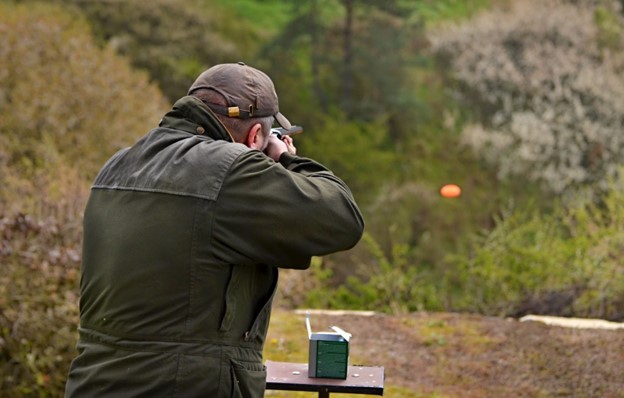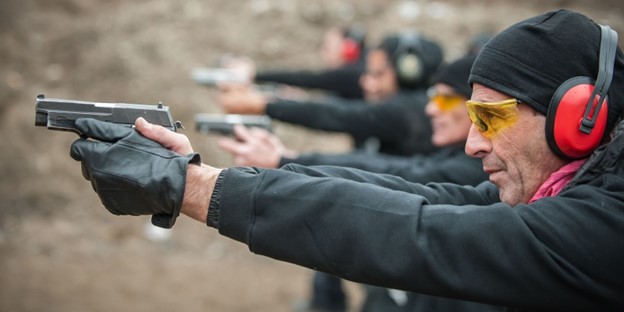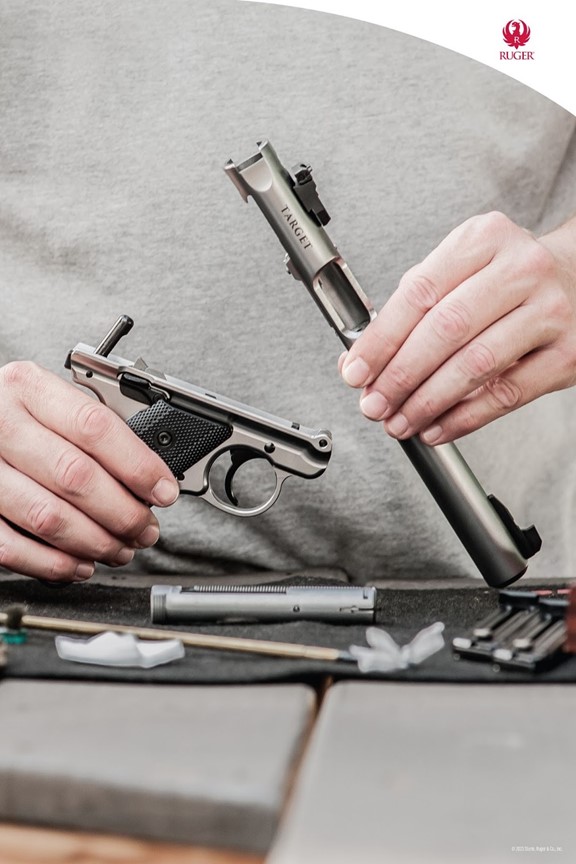Mastering Trap Shooting: The Ultimate Guide to Rifle Techniques and Equipment

Trap shooting is a popular shooting sport that tests a shooter's speed and accuracy. Participants use shotguns to hit clay targets launched from a single machine, known as a trap. The targets are released at various angles and speeds, simulating the flight path of birds. Trap shooting is enjoyed by recreational shooters and competitive athletes alike. It's a versatile and engaging sport.
Historical Background
Trap shooting has a rich history that dates back to the late 18th century. It began in England as a way to practice bird hunting during the off-season. Originally, live pigeons were used as targets. This practice was replaced by glass balls and later by clay targets, which are still used today. The sport gained popularity in the United States in the late 19th century. This led to the establishment of organized competitions. Governing bodies like the Amateur Trapshooting Association (ATA) were also created around this time.
Importance of Skill and Equipment
Success in trap shooting relies heavily on both skill and equipment. Shooters must develop precise aiming and shooting techniques to consistently hit moving targets. This involves mastering stance, posture, and timing. It also includes understanding the mechanics of the rifle and ammunition.
Equally important is the quality of equipment. A reliable and well-maintained shotgun, appropriate ammunition, and proper safety gear are essential. Investing in high-quality equipment can significantly improve a shooter's accuracy and consistency. It can make the sport more enjoyable and rewarding.
This comprehensive guide will delve into essential techniques and equipment for trap shooting. Whether you're a beginner or an experienced shooter, this guide will provide valuable insights to help you succeed.
Understanding Trap Shooting
Trap shooting is a dynamic sport that requires precision and quick reflexes. This section will cover the basics and rules and regulations. We'll also discuss the differences between trap shooting, skeet shooting, and sporting clays.
Basics of Trap Shooting
In trap shooting, shooters use shotguns to hit clay targets launched from a trap machine. Shooters rotate through five positions arranged in a semicircle around the trap house. They must fire at five targets from each station, totaling 25 shots per round.
Rules and Regulations
Trap shooting rules ensure fairness and safety:
- Equipment: Shooters typically use 12-gauge shotguns and specific ammunition.
- Shooting Order: Shooters take turns, moving to the next station after five shots.
- Safety: Eye and ear protection are mandatory, and the shotgun's muzzle must always be pointed in a safe direction.
- Conduct: Shooters must follow range officer commands and maintain proper decorum.
Differences Between Trap, Skeet, and Sporting Clays
Understanding the differences helps appreciate the nuances:
- Trap Shooting: Targets fly away from the shooter at varying angles from a single trap house. Five shooters take turns shooting at these targets.
- Skeet Shooting: Two targets cross in front of the shooters from trap houses at set angles, 40 meters apart. The higher house is 10 feet off the ground, while the lower one is 3.5 feet high.
- Sporting Clays: Simulates hunting with multiple shooting stations and varied target presentations. It's sometimes referred to as "golf for guns".
Each discipline offers unique challenges. Trap shooting is a good choice for beginners due to its straightforward format and focus on a single target trajectory.
Choosing the Right Shotgun for Trap Shooting
Selecting the appropriate shotgun for trap shooting is essential. The right firearm can improve your performance and your enjoyment of the sport. This section will cover key features to look for in a trap shooting shotgun. We'll recommend shotguns for beginners and advanced options for experienced shooters.
Key Features of a Trap Shooting Shotgun
When choosing a shotgun for trap shooting, consider the following features:
- Barrel Length: A longer barrel (28-34 inches) provides a smoother swing and better balance. This is crucial for tracking moving targets.
- Choke: An adjustable or fixed full choke helps tighten the shot pattern. This increases the chances of hitting the target.
- Weight: A heavier shotgun reduces recoil and offers greater stability. This is beneficial for shooting multiple rounds.
- Stock Fit: The stock should fit comfortably against your shoulder. You want an appropriate length of pull and drop for your body type.
- Trigger: A crisp, clean trigger pull enhances accuracy. Adjustable triggers allow customization to suit your preference.
Recommended Shotguns for Beginners
For those new to trap shooting, consider these user-friendly and reliable shotguns:
- Remington 870: Known for its durability and versatility, the Remington 870 is a pump-action shotgun that is easy to use and maintain. It's an affordable option with a reputation for reliability.
- Mossberg 500: Another excellent pump-action choice, the Mossberg 500 is known for its robust construction and ease of use. It offers a variety of configurations to suit different shooters.
- Stoeger Condor Over/Under: An over/under shotgun, the Stoeger Condor offers a classic design at an affordable price. Its 28-inch barrel is ideal for trap shooting. The break-action is simple to use and maintain.
Advanced Shotgun Options for Experienced Shooters
Experienced shooters may prefer more specialized and high-performance shotgun:
- Browning Citori 725: This over-under shotgun is renowned for its balance and smooth action. Its customizable features make it a favorite among competitive shooters.
- Beretta 686 Silver Pigeon: The Silver Pigeon offers excellent craftsmanship, durability, and performance. Its refined design and reliable action make it a standout choice.
- Benelli SuperSport: The Benelli SuperSport is known for its innovative design and technology. This semi-automatic shotgun features low recoil and a fast cycling rate for high-level competition.
Essential Equipment and Gear
Having the right equipment and gear can enhance your trap shooting experience. Here are some essentials to consider:
Proper Ammunition for Trap Shooting
Using the right ammunition is crucial for performance and safety:
- Shot Size: Common shot sizes for trap shooting are #7.5, #8, and #9. These sizes offer a good balance of pellet count and energy.
- Load: A standard load of 1 to 1 1/8 ounces of shot provides sufficient pellets to break the target without excessive recoil.
- Velocity: Look for ammunition with a muzzle velocity of 1,200 to 1,250 feet per second (fps) for consistent performance.
Eye and Ear Protection
Safety is paramount in trap shooting. Protect your eyes and ears with quality gear:
- Shooting Glasses: Use impact-resistant glasses with interchangeable lenses. This will allow you to adapt to different lighting conditions. Brands like Oakley and Wiley X offer reliable options.
- Ear Protection: Some shooters prefer earmuffs and earplugs. Others use electronic hearing protection that amplifies ambient sounds while blocking harmful noise. Peltor and Howard Leight are popular brands.
Shooting Vests and Accessories
A good shooting vest and accessories can enhance comfort and efficiency:
- Shooting Vest: You want a vest with multiple pockets for shells and accessories. Good options include the Browning Trapper Creek Vest, which provides convenience and organization.
- Shell Pouch: For those who prefer not to wear a vest, a shell pouch offers an alternative way to carry ammunition and spent shells.
- Shooting Gloves: Lightweight gloves with good grips protect your hands and improve handling.
Gun Care and Maintenance Tools
Maintaining your firearm ensures reliability and longevity:
- Cleaning Kit: A comprehensive kit with brushes, patches, solvents, and lubricants is essential. Hoppe’s and Otis offer complete cleaning kits.
- Bore Snake: A bore snake makes quick cleaning of the barrel easy and efficient, perfect for use between rounds.
- Gun Case: Protect your firearm during transport with a padded gun case. Hard cases from Pelican and soft cases from Allen provide excellent protection.
Invest in the right rifle, ammo, protective gear, and maintenance tools. By doing so, you can enhance your trap shooting experience and improve your skills in the sport.
Techniques for Improving Your Trap Shooting Skills
Improving your trap shooting skills requires attention to detail and consistent practice. Here are some key techniques to enhance your performance.
Stance and Posture
A proper stance and posture are the foundations of successful trap shooting. Follow these guidelines for optimal positioning:
- Feet Position: Stand with your feet shoulder-width apart. Position your lead foot ahead, pointing it toward the target.
- Balance: Distribute your weight evenly between both feet. Lean forward to maintain balance and absorb recoil.
- Shoulder and Head Alignment: Keep your shoulders square and your head straight. Tilt your head to align your dominant eye with the shotgun rib.
Aiming and Shooting Techniques
Precision in aiming and shooting is crucial for hitting moving targets. Here are some tips:
- Focus on the Target: Keep your eyes on the target, not the shotgun barrel. This helps in tracking the target's movement.
- Swing Technique: Use a smooth, continuous motion to follow the target. Avoid jerky movements, which can throw off your aim.
- Follow Through: After pulling the trigger, continue the swing. This follow-through ensures that your shot is accurate and on target.
Breathing and Focus
Maintaining proper breathing and focus is essential for steady shooting:
- Controlled Breathing: Take deep, controlled breaths to remain calm. Exhale before taking the shot to steady your aim.
- Mental Focus: Stay focused on the task at hand. Clear your mind of distractions and concentrate on the target and your technique.
Common Mistakes and How to Avoid Them
Avoiding common mistakes can improve your trap shooting performance:
- Lifting Your Head: Lifting your head off the stock can result in missed shots. Keep your cheek against the stock throughout the shot.
- Jerky Movements: Sudden movements can throw off your aim. Practice smooth, controlled swings to improve your accuracy.
- Inconsistent Stance: Changing your stance can affect your balance and shot placement. Develop a consistent stance and posture to enhance stability and accuracy.
Training and Practice Tips
Consistent practice is key to mastering trap shooting. Here are some tips to set up an effective training routine:
Setting Up a Practice Schedule
Establishing a regular practice schedule helps build and maintain skills:
- Frequency: Aim to practice at least once or twice a week. Regular sessions help reinforce techniques and muscle memory.
- Duration: Practice sessions should last about 1-2 hours. This allows enough time to work on different aspects of your shooting without fatigue.
Dry Fire Drills and Simulations
Dry fire drills are valuable for improving technique without live ammunition:
- Dry Fire Practice: Use snap caps or dummy rounds to safely practice loading, aiming, and firing your shotgun. Focus on maintaining a smooth swing and follow-through.
- Simulations: Visualize different target scenarios and practice your response. This mental rehearsal helps prepare for real-life situations.
Live Fire Practice Sessions
Live fire practice is essential for honing your shooting skills:
- Variety of Targets: Practice with a variety of targets to simulate different trap shooting scenarios. This helps improve adaptability and accuracy.
- Consistent Feedback: Use feedback from each shot to adjust and improve your technique. Focus on identifying and correcting any mistakes.
Using Shooting Ranges Effectively
Maximize your practice sessions by using shooting ranges effectively:
- Range Facilities: Choose ranges with well-maintained trap shooting facilities. This ensures a consistent and realistic practice environment.
- Practice Rounds: Participate in practice rounds or leagues. You need experience and feedback from other shooters.
- Professional Coaching: Consider hiring a coach for personalized instruction and feedback. A coach can help identify areas for improvement and provide targeted training.
By following these techniques and tips, you can enhance your trap shooting skills. You'll also become a more effective and confident shooter. Regular practice, proper technique, and a focus on continuous improvement are key to success in this dynamic sport.
Trap Shooting Competitions
Competing in trap shooting events can be an exciting way to test your skills and meet other enthusiasts. Here’s a look at the types of competitions, how to prepare, and strategies for success.
Types of Competitions and Events
Trap shooting competitions range from local club matches to national and international events. Key types include:
- Local Club Matches: These are great for beginners. They typically provide a supportive environment to gain experience.
- ATA Registered Shoots: These events follow standardized rules. They offer classifications for different skill levels.
- State and Regional Championships: Larger events draw participants from a broader area. They offer more competitive environments.
- National and International Competitions: Look for prestigious events like the Grand American Championship. They attract top shooters from around the world.
How to Prepare for a Competition
Preparation is key to performing well in competitions:
- Practice Regularly: Consistent practice helps build the skills and confidence needed for competition.
- Simulate Competition Conditions: Practice with the same equipment as you intend to use in competition. Mimic the conditions you'll encounter during the competition as well.
- Physical and Mental Conditioning: You'll need both physical fitness and mental strategies. Stay focused and learn to remain calm under pressure.
Tips for Performing Well Under Pressure
Performing well in competition requires managing nerves and staying focused:
- Stay Calm: Use deep breathing techniques to manage anxiety.
- Visualize Success: Visualize hitting each target successfully to build confidence.
- Stick to Your Routine: Develop and stick to a pre-shot routine to maintain consistency.
Building a Competitive Strategy
A well-thought-out strategy can give you an edge:
- Know Your Strengths: Focus on your strengths and practice to improve weaknesses.
- Adapt to Conditions: Be prepared to adjust your strategy based on weather and other external factors.
- Analyze Performance: After each competition, review your performance to identify areas for improvement.
Community and Resources
Connecting with the trap shooting community can provide valuable support and resources.
Joining Trap Shooting Clubs and Organizations
Joining a club or organization offers several benefits. You'll gain access to facilities, organized events, and a community of like-minded individuals. Consider joining:
- Amateur Trapshooting Association: The ATA provides resources, organizes events, and offers a community for trap shooters.
- Local Shooting Clubs: These offer regular practice sessions, local competitions, and social events.
Online Resources and Forums
Online resources and forums can provide tips, advice, and support from fellow shooters:
- Trapshooters.com: A popular forum where shooters discuss techniques, equipment, and events.
- Shooting Sports USA: Offers articles and tips on trap shooting and other shooting sports.
Books and Courses on Trap Shooting
Books and courses can provide in-depth knowledge and training:
- Books: There are many books that offer detailed insights into techniques and strategies.
- Courses: Online courses from platforms like the NRA or USCCA provide structured training.
Networking with Fellow Shooters
Building a network of fellow shooters can enhance your learning and enjoyment of the sport:
- Attend Events: Participate in competitions and social events to meet other shooters.
- Join Online Communities: Engage in discussions and share experiences on forums and social media groups.
Embracing the Sport: Your Path to Mastery
Trap shooting is a rewarding sport that combines skill, strategy, and equipment. Consistent practice and a commitment to improvement are vital for success in trap shooting. Embrace the journey of learning and refining your skills. Don't be afraid to seek advice and support from more experienced shooters.
Trap shooting is not just about hitting targets; it's about the camaraderie, the joy of mastering a skill, and the thrill of competition. Whether you're shooting for fun or aiming for the top, the sport offers endless opportunities for growth and enjoyment. Stay dedicated, practice regularly, and most importantly, have fun!












